A brief history of nanotechnology
In this article we explore the history of nanotechnology and provide resources to show that self-assembling nanotechnology as a medical application is real and is going on right now.
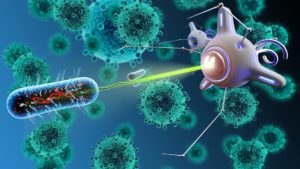
X has been blowing up in mid-September with the “freedom crowd” working overtime to discredit a peer-reviewed study claiming to have found “self-assembling nanotechnology in 54 vials of covid-19 vaccines.” You can view that paper here.

After spending way too much time on X going through threads to find out what the discrepancies were, I came across very cursory remarks like:
- “there were lots of ‘oopsies’ in this study, it should not be taken seriously”
- “a real lab wouldn’t use a light like that”
- “there are lots of elements that self-assemble upon drying”
- “these are not real scientists or doctors”
- “this journal is not credible” and so on.
The most eye-opening takeaway for me has been the swift, group-think, ad-hominem attacks on the authors and publication; instead of providing some actual critique of methodology, validity, results, etc. of the study.
Isn’t this exactly what we experienced over the last 4 years? How many times were credible experts rolled out with valid information, only to be thrown under the bus and discredited? Have we learned nothing?
Scientific Studies, Papers and Publications on Nanotechnology
The National Nanotechnology Initiative (NNI) (created by Bill Clinton in 2000) in the United States define Nanotechnology as “a science, engineering, and technology conducted at the nanoscale (1 to 100 nm), where unique phenomena enable novel applications in a wide range of fields, from chemistry, physics and biology, to medicine, engineering and electronics”. To give you some context: a strand of hair is about 60,000 nm thickness while the DNA double helix has a radius of 1 nm.
Nanotechnology dates back to 400 AD when the Romans figured out how to use different types of metals (gold, silver, copper mostly) to make two-toned (or dichromatic) glass. A similar effect can be seen in stained glass windows from the Medieval era.
In the modern era, the American physicist and Nobel Prize laureate Richard Feynman introduced the concept of nanotechnology in 1959. During the annual meeting of the American Physical Society, Feynman presented a lecture entitled There’s Plenty of Room at the Bottom at the California Institute of Technology (Caltech). In this lecture, Feynman made the hypothesis “Why can’t we write the entire 24 volumes of the Encyclopedia Britannica on the head of a pin?”, and described a vision of using machines to construct smaller machines and down to the molecular level.
In 1986, K. Eric Drexler published the first book on nanotechnology Engines of Creation: The Coming Era of Nanotechnology, which led to the theory of “molecular engineering” becoming more popular.
In 1986, physicists Gerd Binnig and Heinrich Rohrer received the Nobel Prize in Physics “for their design of the Scanning Tunnelling Microscope or STM”. This invention led to the development of the atomic force microscope (AFM) and scanning probe microscopes (SPM), which are the instruments of choice for nanotechnology researchers today.
Since then there have been many discoveries in the nanotechnology space. You can view a full, year-by-year breakdown here. I have highlighted some points of particular interest that are relevant to discussions going on today. For example, “quantum dots”, “carbon nanotubules”, “fluorescent carbon dots”, and “artificial molecular machines” have been known about for decades.
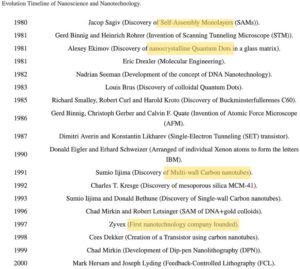
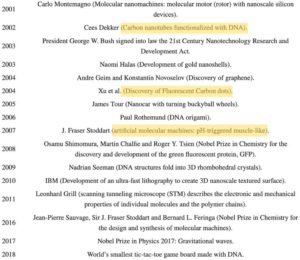
A collection of studies, papers, and articles on nanotechnology
I am going to simply dump a bunch of resources for you to check out (instead of unpack each one in great detail). Where necessary, I have pulled out quotes and relevant footnotes I think add weight to the discussion.
Researchers develop self-assembling nanoparticle SARS-CoV-2 vaccines
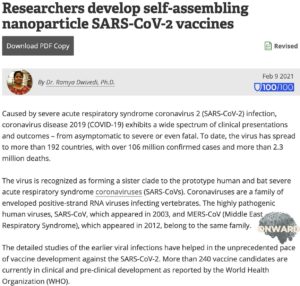
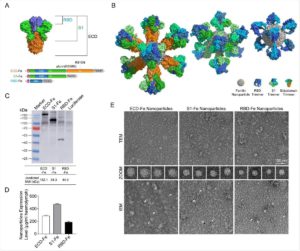
From the Lancet (2024): “A self-assembling SARS-CoV-2 WA-1 recombinant spike ferritin nanoparticle (SpFN) vaccine co-formulated with Army Liposomal Formulation (ALFQ) adjuvant containing monophosphoryl lipid A and QS-21 (SpFN/ALFQ) has shown protective efficacy in animal challenge models”.
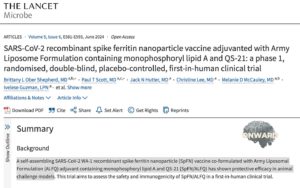
Self-assembling of graphene oxide on carbon quantum dot loaded liposomes. Interestingly, this is from the faculty of dentistry at Marquette University, Milwaukee.
From the abstract:
“This paper describes the design of stimuli-sensitive theranostic nanoparticles, composed of reduced graphene oxide (rGO) self-assembled on thermosensitive liposomes encapsulated doxorubicin (DOX) and carbon quantum dot (CQD) (CQD-DOX-rGO-Tlip).”
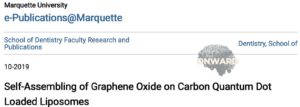
Here we have US patent number US20210346570A1 for “Self-assembling graphene oxide-protein matrix”.

Carbon nanotubes in covid-19: A critical review and prospects
“Notes: The utility of Carbon nanotubes in the prevention, diagnosis and treatment of covid-19. This review encompasses the various biosensor and nano-biosensors employed in the prevention, diagnosis and treatment of SARS-CoV-2 infection. The prime focus of this review is to summarize and critically review the recent advancements in Carbon nanotubes-based biosensors for a spectrum of uses amid the covid pandemic.”
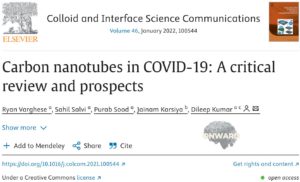
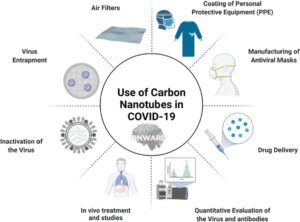
I will leave it at that as this could go on ad-infinitum at this point.
This is a multi-trillion dollar industry that is not going away. As we enter into an era of pandemics, digital ID’s, IoT, IoB, and a biodigital surveillance state, there is a grim picture unfolding: that we will be tracked and surveilled using this technology interfaced with “the cloud”.
Not sure about you, but to me this breaches every level of informed consent, privacy, bodily autonomy, and “medical ethics” I can think of. The sooner we accept this is actually going on, the sooner we can start taking steps to get it urgently banned all over the world, and detoxify it from our bodies.
Author: Brett Hawes
yogaesoteric
September 24, 2024
